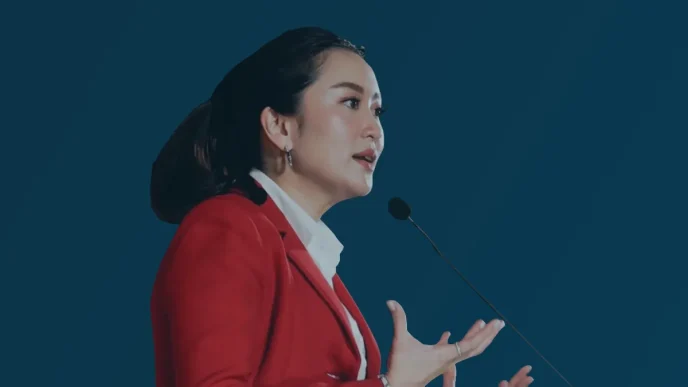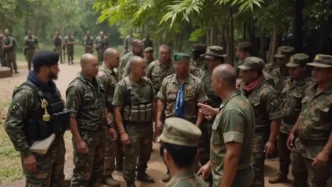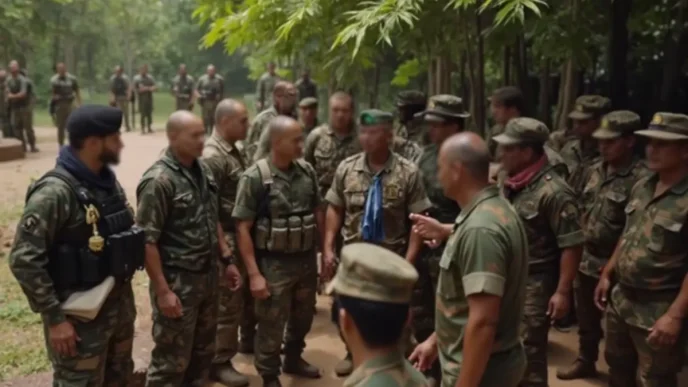In a pointed rebuttal to China’s criticism, a senior Philippine official declared on Thursday, March 27, 2025, that the country is “no one’s chess piece,” signaling a firm stance on its sovereignty ahead of a high-profile meeting with United States Secretary of Defense Pete Hegseth. The statement, delivered by Undersecretary Claire Castro of the Presidential Communication Office, underscores growing tensions in the region, particularly over disputed territories in the West Philippine Sea.
Defiant Response to Beijing’s Criticism
The Philippines’ sharp response came after China’s Foreign Ministry spokesperson, Guo Jiakun, warned against defense and security cooperation that could “target or harm any third party” or escalate regional tensions. According to a report by Global Times, Guo suggested that nations acting as “chess pieces” risk being abandoned, framing such partnerships as invitations to a “predator.” Castro dismissed these remarks, asserting during a briefing in Manila, “If China really believes in and is concerned about peace and stability in the region, it should abide by international law and respect the sovereignty of each country.”
This exchange highlights a deepening rift between Manila and Beijing, rooted in long-standing disputes over maritime territories in the West Philippine Sea, a resource-rich area claimed in part by both nations. The Philippines has consistently sought to assert its rights under international law, particularly following the 2016 arbitral ruling that invalidated China’s expansive claims in the region—a decision Beijing has rejected.
US Defense Secretary’s Visit: A Strategic Signal
Pete Hegseth’s visit to the Philippines, scheduled for March 28 to 29, 2025, marks his first trip to the country as US Secretary of Defense. During his two-day stay, Hegseth is expected to hold a courtesy call with President Ferdinand Marcos Jr. at Malacañang Palace and meet with Defense Secretary Gilberto Teodoro. While the agenda remains undisclosed, analysts anticipate discussions on strengthening military cooperation, joint exercises, and potentially expanding US access to Philippine bases under the Enhanced Defense Cooperation Agreement (EDCA).
The timing of the visit is significant, coming amid heightened Chinese activities in the West Philippine Sea, including reported incursions by Chinese vessels near Philippine-claimed reefs. Recent joint patrols involving the Philippines, the US, and Japan have further irritated Beijing, which views such alliances as provocations. Hegseth’s presence in Manila is widely seen as a reaffirmation of Washington’s commitment to its long-standing ally under the 1951 Mutual Defense Treaty, which obliges mutual support in the event of an armed attack.
West Philippine Sea: A Persistent Flashpoint
The West Philippine Sea, part of the broader South China Sea, remains a geopolitical hotspot, with overlapping claims from China, the Philippines, Vietnam, Malaysia, and Brunei. For the Philippines, the area is not only a matter of national sovereignty but also critical to its economic interests, encompassing vital fishing grounds and potential energy reserves. China’s construction of artificial islands and deployment of military assets in the region have drawn international condemnation, though enforcement of the 2016 arbitral ruling remains elusive.
Under President Marcos Jr., the Philippines has adopted a more assertive posture, balancing diplomatic engagement with China while deepening security ties with the US and other partners like Japan and Australia. This approach contrasts with the more conciliatory stance of his predecessor, Rodrigo Duterte, who sought closer economic ties with Beijing. Marcos Jr.’s administration has prioritized transparency in reporting Chinese actions in disputed waters, often releasing footage of confrontations to garner international support.
China’s Narrative and Regional Implications
Beijing’s rhetoric, as articulated by Guo, reflects a broader strategy to frame US involvement in the region as destabilizing. By casting the Philippines as a pawn in a larger geopolitical game, China seeks to pressure smaller nations into distancing themselves from Washington. This narrative, however, struggles to gain traction in Manila, where public sentiment often views China’s maritime actions with suspicion. Polls conducted in late 2024 by local research firms indicated that a majority of Filipinos support stronger defense ties with the US as a counterbalance to Chinese assertiveness.
The broader implications of this standoff extend beyond bilateral relations. The South China Sea is a critical artery for global trade, with trillions of dollars in goods passing through annually. Any escalation risks disrupting commerce and drawing in other powers, potentially destabilizing Southeast Asia. For ASEAN (Association of Southeast Asian Nations), of which the Philippines is a member, the issue tests the bloc’s ability to maintain unity and relevance amid competing superpower interests. Progress on a Code of Conduct for the South China Sea, negotiated between ASEAN and China, remains slow, hampered by disagreements over enforcement mechanisms.
Philippine Sovereignty at the Forefront
Castro’s assertion of independence is not merely rhetorical but reflects a strategic recalibration in Philippine foreign policy. By publicly rejecting the notion of being a “chess piece,” Manila signals its intent to navigate great power rivalry on its own terms. This stance is complicated by domestic considerations—while security alliances with the US enjoy broad support, there are concerns about being drawn into a direct confrontation with China, a major trading partner. Philippine exports to China, including electronics and agricultural products, remain significant, though economic coercion tactics by Beijing have occasionally strained ties.
Analysts suggest that the Marcos administration is walking a tightrope, seeking to bolster deterrence capabilities without provoking outright conflict. The expansion of EDCA sites in 2023, granting US forces access to additional bases near strategic maritime areas, was a bold move that drew China’s ire. If Hegseth’s visit results in further commitments—such as increased military aid or joint exercises—it could embolden Manila but also heighten the risk of miscalculation in contested waters.
Public Sentiment and the Path Ahead
In the streets of Manila, opinions on the issue vary. Some residents express pride in the government’s defiant tone, viewing it as a necessary stand against external pressure. “We’ve been pushed around for too long in the West Philippine Sea,” said Maria Lopez, a local vendor near the capital. “It’s time we show we’re not just someone’s pawn.” Others, however, worry about the economic fallout of strained relations with China, particularly for industries reliant on Chinese investment.
Internationally, the Philippines’ position garners sympathy but limited tangible support. While allies like the US and Japan have conducted joint patrols and issued statements condemning China’s actions, broader multilateral action remains elusive. The United Nations and other bodies have called for restraint, but enforcement of international law in the region hinges on the willingness of major powers to uphold it—a dynamic that often leaves smaller nations like the Philippines vulnerable.
As Hegseth’s visit unfolds, the spotlight remains on how Manila balances its sovereign interests with the realities of regional power dynamics. The government’s insistence on independence sends a clear message, but translating words into sustained policy will require deft diplomacy and strategic foresight. For now, the West Philippine Sea continues to simmer as a test of wills, with the Philippines determined to chart its own course amid turbulent waters.
As talks with the US proceed, questions linger about the long-term impact on regional stability and whether Manila’s stance can reshape the geopolitical landscape of Southeast Asia.














